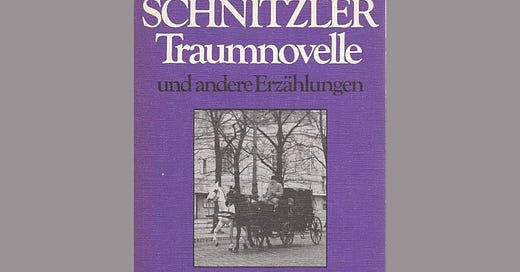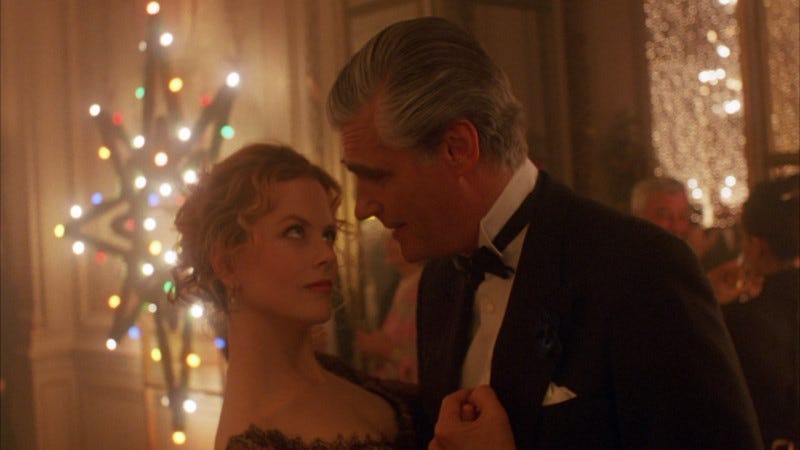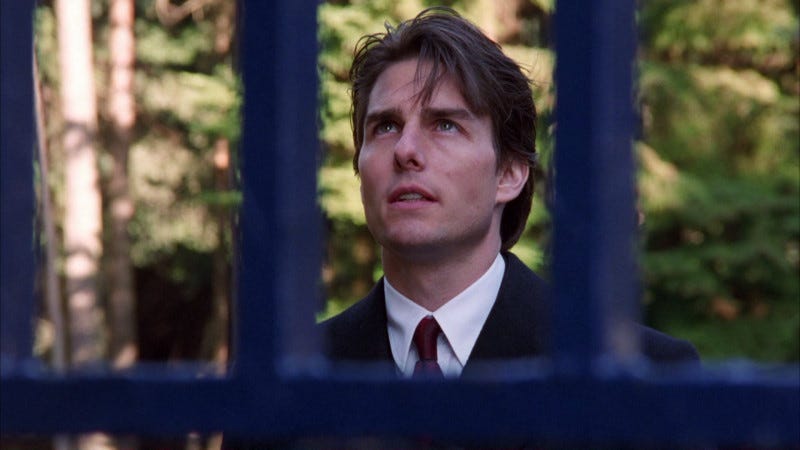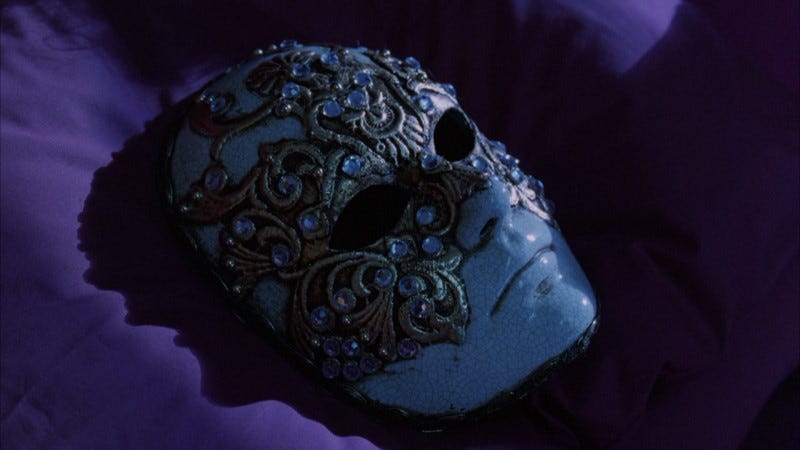This is the final letter in a reading series on books adapted by Stanley Kubrick, while also reading along with a new biography of the filmmaker by Kolker and Abrams called KUBRICK: An Odyssey.
Arthur Schnitzler: Dream Story, translated by J. M. Q. Davies, introduction by Frederic Raphael. London: Penguin, 1999 [1926].
Arthur Schnitzler is older than Stefan Zweig by a couple of decades, and while these Austrian writers were very different they both had a knack for mood and deft characterization. The son of a notable Jewish physician, Arthur also studied medicine but quickly broke out as an author of one-act plays and short novels full of urban gadabouts at the turn of the century.
Following Kubrick’s directing career, as this series of letters has done, has amounted to following the footsteps of Schnitzler’s Dream Story (not even considered one of his top shelf works — though recall Kubrick opted for Barry Lyndon over Vanity Fair) and its relation to the filmmaker over the decades.
One fun fact from the biography: Kubrick was a Christmas guy. And that partially explains the choice to transplant the narrative of a Jewish petty-bourgeois family in turn of the century Vienna to the Wasp-coded real-life couple of Cruise and Kidman at the end of the century in uptown New York.
Something about this unassuming yet libidinally profound narrative grabbed onto Kubrick and didn’t let go. Eyes Wide Shut follows the story beat for beat despite being “de-Jewified,” which was a conscious and insistent order from Kubrick to his screenwriters (whom he once again siloed so they weren’t even aware of each other).
Dream Story was really enjoyable in Davies’s translation, on a phrase-by-phrase level. Memorable is this description of Fridolin making his late night house call — just after the disturbing conversation with his wife Albertine — with well-chosen details, like the kerosene lamp, and the Tolstoian reference to “the dead man.”
From Fridolin’s apartment near the General Hospital in the Josefstadt it was barely a quarter of an hour’s walk to the Schreyvogelgasse; and so Fridolin soon found himself climbing the ill-lit, winding stairs of the old house to the second floor and tugging at the bell; but, even before the old-fashioned tinkling resounded, he noticed that the door was ajar; he stepped through the unlit hall into the living-room and realized immediately that he had arrived too late. The green-shaded kerosene lamp hanging from the ceiling cast a dim light over the bed-cover, under which an emaciated body was stretched out motionless. The dead man’s face was in shadow, but Fridolin knew it so well that he imagined he could see it quite distinctly — gaunt, wrinkled, the high forehead, the full short white beard, the strikingly ugly ears with their white hairs.
So what about the whole orgy thing?
What strikes me about both the book and film versions is the use of the circle in its staging. Fridolin witnesses a spiraling motion of dance partners in the mirror above the piano: “Fridolin could see that Nachtigall had been blindfolded, but he also thought he noticed that beneath the cloth his eyes were riveted to the tall mirror opposite, where the gaudy courtiers swirled with their naked dancing-partners.”
It’s almost a dance to the music of time, a unity of human life and eternal cycles. And it seems to be a rite of spring, where sexuality stands in for general prosperity and continuity. Contrasted to this freneticism is Kubrick’s eerie new-age Rochester mansion gig. The circle is fixed on the ground as a red carpet.
And poor Fridolin/Bill Hartford the interloper becomes the scapegoat, literally cast out of the circle.
After reading the book and watching the film again, I developed a pet theory that the whole bit with the interloper — the “password to the entrance” and the “password to the house” — is also a rote procedure, along with the redemption and the woman’s sacrifice. That is, if there hadn’t been a real intruder, someone else would take that role. There must be sacrifice of the individual to give power to the collective.
The fact of the Viennese setting makes Fridolin’s reflections on the ritual much more specific, as opposed to the Rochester mansion affair in Kubrick’s New York.
“A secret society? Well, secret undoubtedly. But among themselves, were they personally acquainted? Aristocrats, even attached to the court? He thought of certain archdukes whom one could imagine capable of this kind of escapade.”
Fridolin is an outsider, literally, and socially as a Jewish professional amongst the Austrian aristocrats and their ridiculous goings-on.
There are many frames from this explicit but not-so-erotic film I could be sharing, but then the Substack platform may send their own cloaked and masked men to my home for a shakedown!
Kubrick’s mise-en-scene was ridiculed in 1999 but it looks great, especially in the cinema: a dreamy mash-up of Seinfeld exteriors with a New York of the 1940s and 50s, like a cobbling of memories. And the co-authors of the biography point out the many touches that harken back to Eastern Europe, including the costume store and that Bela Lugosi handsome guy at Ziegler’s big Christmas party.
Surprisingly there wasn’t much in the book about the shoot itself, other than what we knew already, that it was brutally long. And Kubrick’s health took a hard decline by the end of the 90s. Most of the drama about this film is in its post-production history, when Kubrick had died and his crew were still in need to censor the orgy scene to avoid the NC-17 rating — plus the mismarketing of the teaser trailer which prepared the audience for some steamy Cruise-Kidman action on screen instead of the cool, sleepwalking piece of trance cinema that finally arrived. (The insanely long shoot may have taken its toll on that couple as well.)
So much then for the run of one of the last great Hollywood studio directors of the classical mold. EWS is now a significant point of reference for conspiracism because of the Epstein business. The final impression on your host is that Kubrick’s body of work is inextricably entangled with popular culture at every scale, from the mythical and iconic to the most referential aspects of America’s collective madness.






